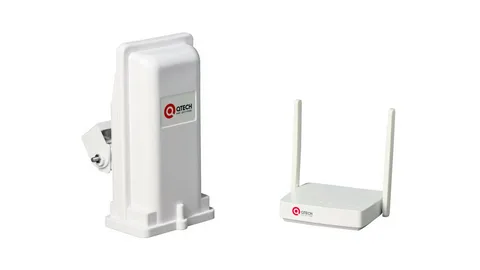Introduction: Understanding the Role of LTE Modems
In today’s hyper-connected world, staying online is more important than ever. Whether it’s for work, entertainment, or communication, fast and reliable internet access has become a daily necessity. At the core of this wireless revolution lies a crucial device— LTE modems. These compact yet powerful gadgets allow users to connect to 4G LTE networks, offering high-speed internet without the need for fixed-line connections. From households to remote job sites, LTE modems have become an essential solution for flexible and efficient connectivity.
What Are LTE Modems?
LTE modems are devices that connect to a cellular network—specifically the Long-Term Evolution (LTE) network—to provide internet access. They function similarly to traditional broadband modems but use a SIM card and mobile data instead of a wired connection.
LTE (Long-Term Evolution) is a standard for wireless broadband communication that delivers high-speed data transfer, typically much faster than 3G networks. This technology enables users to browse the web, stream videos, join video conferences, and download large files seamlessly.
These modems can come in different forms—standalone desktop devices, portable hotspots (MiFi), or integrated modules within routers and IoT systems. Their versatility and mobility make them ideal for a wide range of applications.
See more: 4g modem
How LTE Modems Work
The working principle behind LTE modems is straightforward. When you insert a SIM card into the modem, it connects to the nearest LTE cell tower operated by your mobile carrier. The modem then converts the LTE signal into a data stream that can be used by your devices—laptops, smartphones, or even entire networks.
Some LTE modems come with built-in Wi-Fi routers, allowing multiple users to connect simultaneously. Others connect directly to a computer or router via USB or Ethernet ports. Advanced models can automatically switch between LTE and 3G networks, ensuring a stable connection even in areas with weaker signals.
Benefits of LTE Modems
The popularity of LTE modems continues to grow because of the numerous advantages they offer over traditional internet connections.
- Mobility and Flexibility: LTE modems can be used almost anywhere within network coverage. This makes them ideal for travelers, digital nomads, and businesses with mobile operations.
- Easy Setup: Unlike fiber or DSL connections, LTE modems require minimal installation. Just insert a SIM card, turn on the device, and you’re ready to connect.
- High-Speed Connectivity: With speeds reaching up to 300 Mbps (depending on network conditions), LTE ensures smooth video streaming, gaming, and remote work.
- Backup Internet Solution: Many households and businesses use LTE modems as a backup option in case their primary connection fails.
- Cost Efficiency: For users in rural or underserved areas, LTE modems can be a more affordable and practical option than installing wired infrastructure.
Applications of LTE Modems
The versatility of LTE modems makes them suitable for multiple industries and everyday uses:
- Home and Office Use: They provide reliable broadband connectivity for work-from-home setups and small offices.
- Transportation: LTE-enabled devices in cars, buses, and trains keep passengers connected during travel.
- IoT (Internet of Things): LTE modems are integral to smart devices, security cameras, and industrial monitoring systems that require continuous data transmission.
- Retail and Events: Pop-up shops, outdoor events, and temporary kiosks use LTE connections for payment systems and live streaming.
- Remote Locations: Construction sites, farms, and offshore facilities rely on LTE modems for communication and real-time data sharing.
Choosing the Right LTE Modem
When selecting an LTE modem, several factors should be considered:
- Network Compatibility: Ensure the modem supports your carrier’s LTE bands.
- Speed and Category: Look for Category 6 or higher for faster download and upload speeds.
- Wi-Fi Capability: If multiple devices will connect, choose a model with a built-in Wi-Fi router.
- Port Options: For wired connections, check for Ethernet or USB ports.
- Antenna Support: External antenna ports improve signal strength in low-coverage areas.
By matching the modem’s features with your specific needs, you can maximize performance and reliability.
The Future of LTE Modems
While 5G technology is on the rise, LTE modems continue to play a vital role in global connectivity. Many regions are still expanding their LTE infrastructure, and hybrid LTE/5G devices are becoming more common. LTE remains a dependable and cost-effective option for millions of users worldwide, especially in rural and developing areas.
As technology evolves, LTE modems are expected to become even faster, smarter, and more energy-efficient, ensuring seamless connectivity for both individuals and businesses.
Conclusion: The Power of Seamless Connectivity
In summary, LTE modems have revolutionized how we access the internet—offering speed, mobility, and convenience in one compact package. They bridge the gap between wired and wireless networks, empowering users to stay connected anytime, anywhere.
Whether you need reliable home internet, on-the-go access, or connectivity for smart devices, LTE modems remain one of the most practical and powerful solutions in today’s digital age.
For more information: click here

